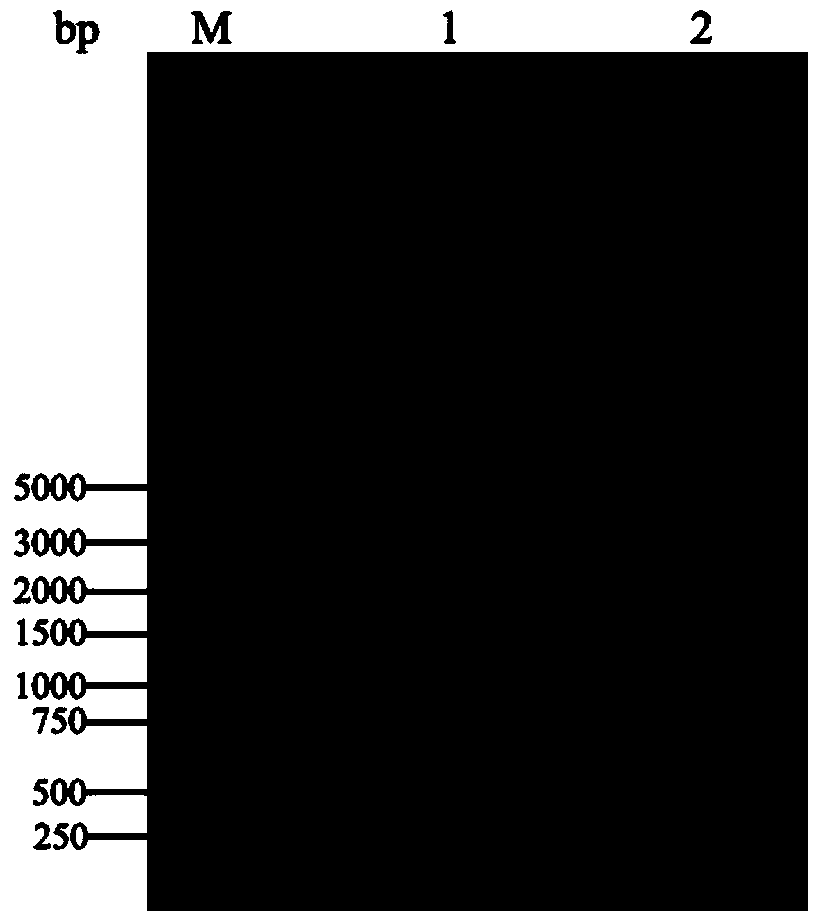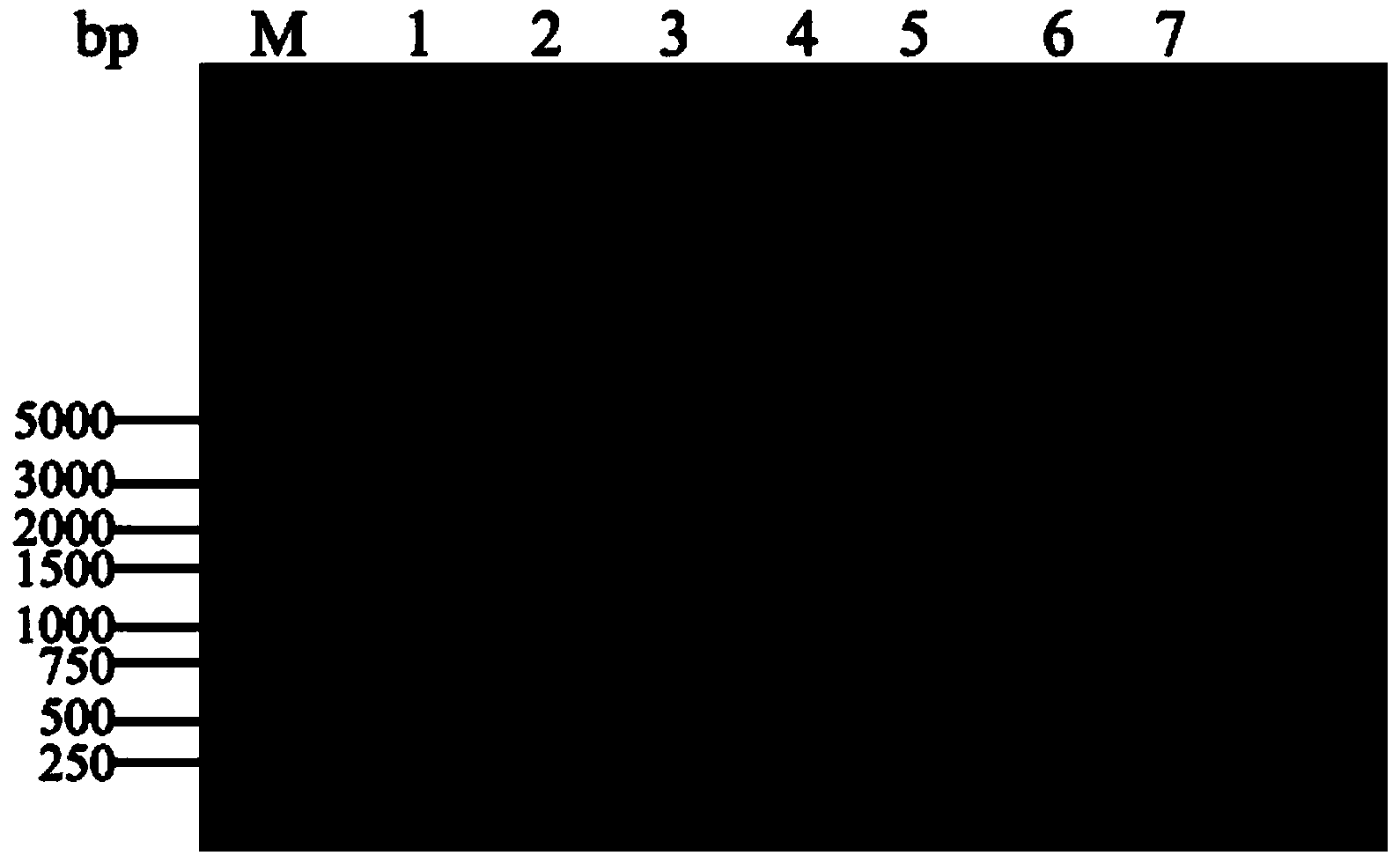Single-resistance escherichia coli-bacillus subtilis shuttle expression vector and application thereof
A Bacillus subtilis, shuttle expression vector technology, applied in the field of microorganisms and bioengineering, can solve the problems of low transformation efficiency, low transformation efficiency, and low transformation efficiency of the Bacillus subtilis expression system
- Summary
- Abstract
- Description
- Claims
- Application Information
AI Technical Summary
Problems solved by technology
Method used
Image
Examples
Embodiment 1
[0069] [Example 1] Cloning of kanamycin resistance gene and construction of promoter probe vector
[0070] Extract pET-28a(+) vector plasmid and pUC57 plasmid. Use the pET-28a(+) plasmid DNA as a template, and use the synthetic P1 / P2 (Table 1) as primers to amplify the Kan gene fragment on the pET-28a(+) vector, which does not contain a promoter. EcoR V and Pci I double-digest Kan gene fragment 1 ( figure 1 ), PCR product recovery product; EcoR V and Pci I double enzyme digestion pUC57 plasmid reclaims 2200bp large fragment ( figure 1 ), connected with the Kan gene restriction fragment, transformed E. coli DH5α, and prepared DH5α supercompetent by Inoue method, the method refers to "Molecular Cloning Experiment Guide (3rd Edition)", and spread it on LB solid containing 100 μg / mL ampicillin Screened on the medium plate, verified by PCR and sequencing (pUC57 vector general sequencing primers M13F and P3), and finally the vector with successful sequencing was named pUCKan.
[...
Embodiment 2
[0072] [Example 2] Cloning of promoter active fragment
[0073] Genomic DNA of Bacillus subtilis (Bacillus subtilis) BS168 and Bacillus licheniformis (Bacillus licheniformis) ATCC14580 was extracted by CTAB method (cetyltrimethylammonium bromide) as templates for gene amplification [Acta Microbiology Sinica, 2006, 46( 1): 7-12.]; The genomic DNA of Bacillus subtilis BS168 and Bacillus licheniformis ATCC14580 was partially digested with Sau3A I, so that the digested fragments were concentrated between 0.5-5kb. Using the pHYKan vector as the promoter probe carrier, the promoter was screened from the genome of Bacillus subtilis [Acta Microbiology, 2004, 44 (4): 457-460; Journal of Fuzhou University (Natural Science Edition), 2013, 41 (3) :391-396.]. The specific method is: use BamH I to completely digest the pHYKan vector, dephosphorylate it, and then connect it with the above-mentioned genomic DNA partial digestion fragment at an appropriate ratio, transform Escherichia coli DH...
Embodiment 3
[0076] [Example 3] The whole plasmid PCR removes the ampicillin Amp resistance gene fragment in the vector
[0077] Primer P22 / P23 (Table 1) was phosphorylated with T4Polynucleotide Kinase from Takara Company. The 20 μL reaction system is: P22 / P23 primer mixture (final concentration of each primer 12.5 μM) 4 μL; ATP (10 mM); 10×Reaction buffer 2 μL; 10×T4 Polynucleotide Kinase (10U / μL) 2 μL; dH 2 O 9.6 μL.
[0078] Extract pUCKanEB1, pUCKanEB2, pUCKanEB3, pUCKanEB4, pUCKanEB5, pUCKanEB6 and pUCKanEB7 plasmid DNAs, use them as templates, and use phosphorylated primers P22 / P23 to amplify. The connection conditions were connected at 22°C for 2 hours, transformed into Escherichia coli DH5α, spread on the LB solid medium plate containing 50 μg / mL kalamycin for screening, verified by PCR and sequencing (sequencing primer P24, Table 1), and finally The successfully sequenced vectors were named pKanEB8, pKanEB9, pKanEB10, pKanEB11, pKanEB12, pKanEB13 and pKanEB14.
PUM
 Login to View More
Login to View More Abstract
Description
Claims
Application Information
 Login to View More
Login to View More - R&D
- Intellectual Property
- Life Sciences
- Materials
- Tech Scout
- Unparalleled Data Quality
- Higher Quality Content
- 60% Fewer Hallucinations
Browse by: Latest US Patents, China's latest patents, Technical Efficacy Thesaurus, Application Domain, Technology Topic, Popular Technical Reports.
© 2025 PatSnap. All rights reserved.Legal|Privacy policy|Modern Slavery Act Transparency Statement|Sitemap|About US| Contact US: help@patsnap.com



